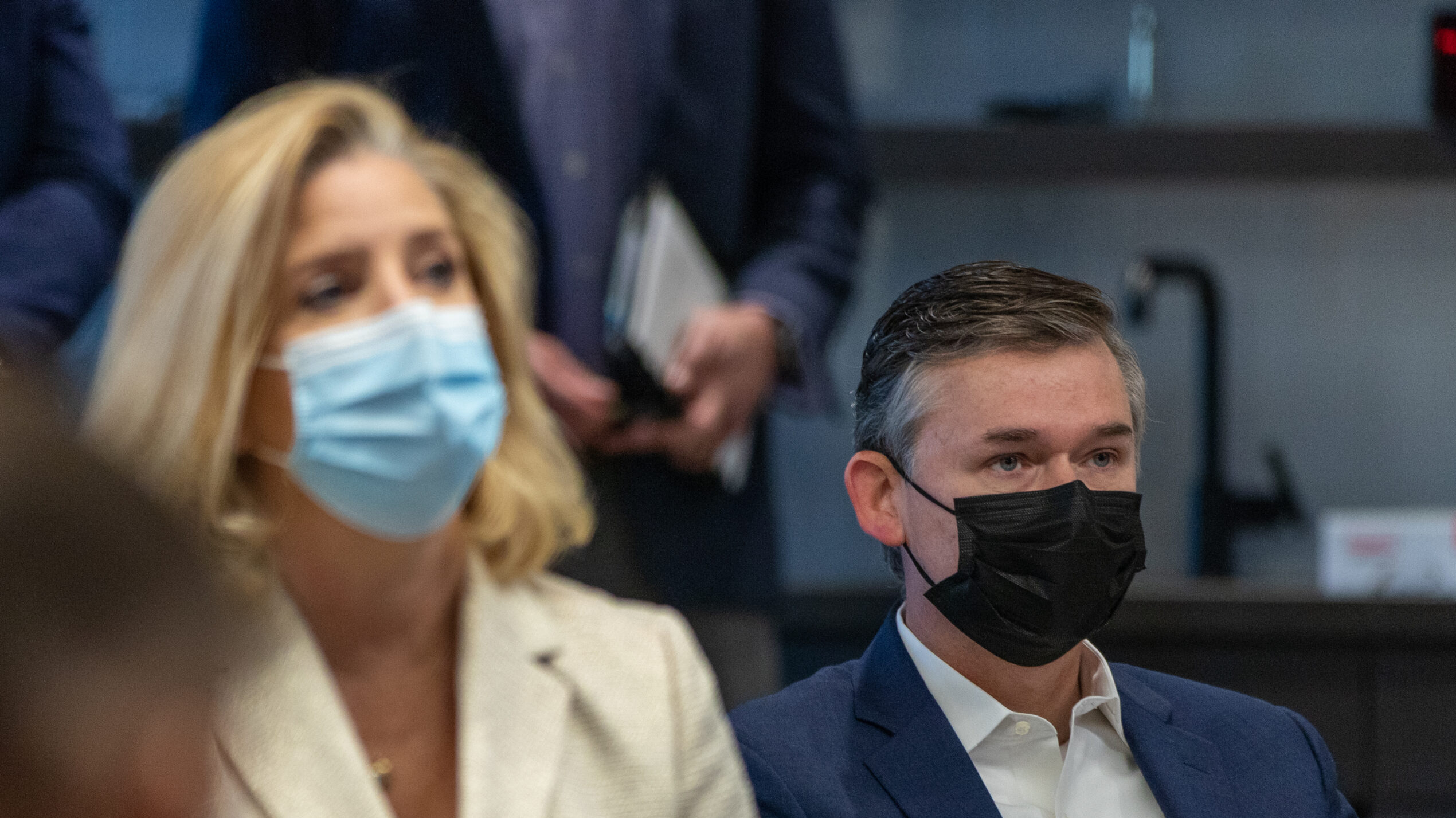
Hon. Christine Wormuth, Secretary of the Army, and Mr. Douglas R. Bush, Acting Assistant Secretary of the Army briefed on capabilities by panelist Col. Robert J. Whisham, Director of Army Applications Lab and Dr. Casey Perly, Director of Technical Insights & Analysis on September 20th, 2021, in Austin, Texas. (US Army/DVIDS)
WASHINGTON: Army Futures Command’s role in the service’s modernization enterprise is being narrowed, according to a new directive obtained by Breaking Defense, as Army leadership aims to clarify AFC’s roles and responsibilities.
The May 3 directive, signed by Army Secretary Christine Wormuth, states the commanding general of Army Futures Command will now coordinate with the assistant secretary of the Army for acquisition, logistics and technology (ASA(ALT)) on research, development and acquisition efforts. ASA(ALT) will be responsible for the overall supervision of acquisition and oversight of the service’s research and development activities, including science and technology efforts. It will also be responsible for the direction and supervision of the Army’s acquisition workforce.
It’s a bureaucratic change that may seem small, but which effectively puts ASA(ALT) in the driver seat for acquisition issues after several years of ambiguity where it appeared AFC had the upper hand in some acquisition debates.
AFC, formed in 2018 to accelerate the Army’s modernization efforts, consists of eight cross-functional teams tied to its priorities: the Army network, future vertical lift, long-range precision fires, air and missile defense, next generation combat vehicles, soldier lethality, the synthetic training environment and assured positioning, navigation and timing/space. AFC also formed Project Convergence, the service’s sensor-to-shooter learning campaign that was its primary contribution to the Pentagon’s Joint All Domain Command and Control effort.
After AFC’s establishment, the Army issued several directives defining the role between AFC and other inter-service organizations engaged in modernization. The guidance primarily addressed roles arising early in the equipping lifecycle and did not adequately account for shifting roles and functions as requirements moved into programs of record, according to the directive.
“Moreover, language in these directives created ambiguity regarding the primacy of acquisition authorities vested in the Army Secretariat that preserve civilian oversight and control of acquisition matters,” the directive states. “Successful delivery of warfighting capabilities requires the input and contribution of many organizations, not the unitary direction of one Army command. As modernization programs evolve through the system life cycle, different organizations will assume primary execution roles.”
The commanding general of Army Futures Command is “responsible for force design and force development, and is the capabilities developer and operational architect for the future Army,” according to the directive. “AFC assesses and integrates the future operational environment, emerging threats, and technologies to provide warfighters with the concept and future force designs needed to dominate a future battlefield.”
The directive also states the AFC commanding general is responsible for the operation of the service’s research laboratories and centers.
In a statement to Breaking Defense, Army spokesperson Ellen Lovett said the policy directives issued by the service after the initial establishment of AFC were “well-intentioned”, but “the guidance had the unintended consequence of creating ambiguity in long-established acquisition authorities.”
“This administrative change eliminates that ambiguity with clearly defined roles consistent with statute, and will better facilitate collaboration in our modernization and equipping enterprise,” Lovett said.
The May 3 directive also clarifies roles in other service organizations: the commanding general of Army Materiel Command is responsible for operating the service’s organic industrial base and ensuring issues in the acquisition lifecycle are addressed; the commanding general of Army Training and Doctrine Command is responsible for developing new operational doctrine as the service modernizes its formations; the commanding general of Army Forces Command is responsible for training and deploying combat-ready forces to build readiness and support combatant command requirements. The deputy chief of staff (G-3/5/7) is the Army’s “lead integrator and synchronizer across force modernization time horizons.”
Army eyes TBI monitoring, wearable tech for soldiers in high-risk billets
“We are also looking at what additional personal protective equipment we can provide to our folks, especially instructors and others who are routinely exposed to blast pressure,” said Army Secretary Christine Wormuth.


























